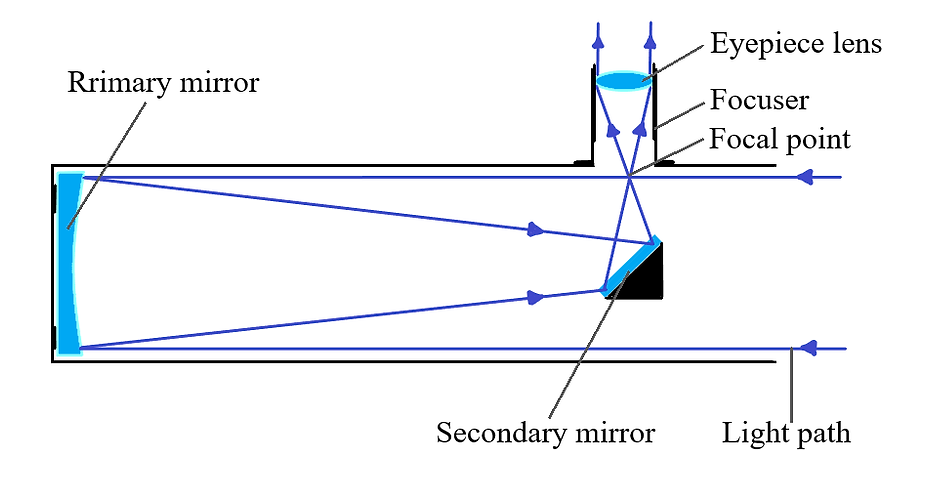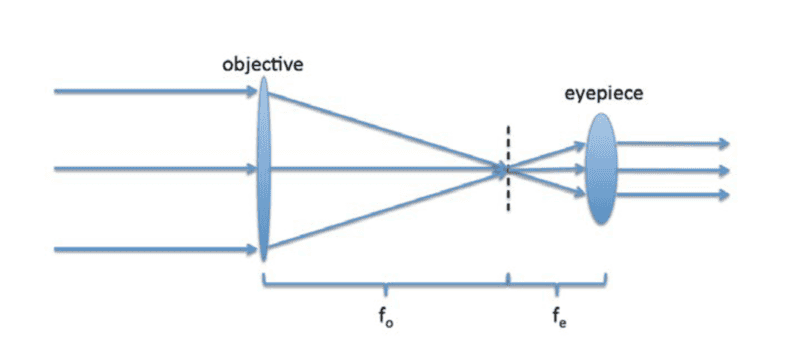I am an astronomy hobbyist and have a 6" Newtonian at my home. While I was collimating my telescope it hit me that why is there a concave mirror at the back instead of a convex mirror. Why do telescopes converge light instead of diverging them?
In this diagram it is evident that the concave lens is divergent i.e. the concave lens diverges light. Any two points(let's call them $A$ and $B$)(both the points are present in the light rays) perpendicular to the principal axis will be further separated when the light rays pass through the lens. Therefore $A'B'$ will be larger than $AB$. And hence the image will be magnified.
The same is inversed in the other case where the $l(AB)>l(A'B')$
Then why do telescopes converge light instead of diverging them? It is evident that they converge lightrays as the Refractors use a convex lens, A Newtonian uses of concave mirror and a Catadioptric uses both of them.





